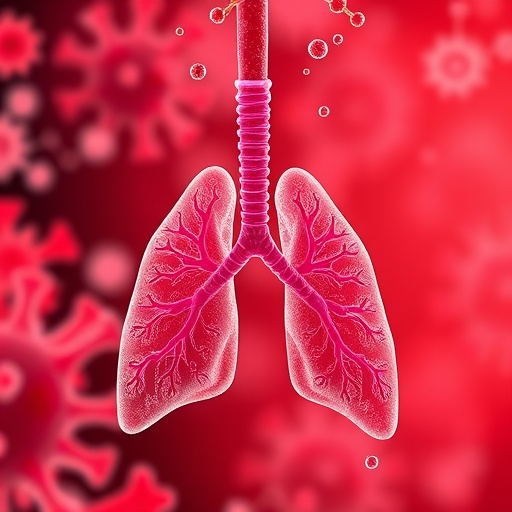Zika Vaccine Candidate Successfully Enhances Immune Response – Vax-Before-Travel

Report on Zika Vaccine Development and its Contribution to Sustainable Development Goals
Introduction: The Global Health Challenge of Zika Virus
The Zika virus (ZIKV), first identified in humans in 1952, represents a significant global health threat, directly impeding progress towards several Sustainable Development Goals (SDGs). The virus is particularly concerning due to its association with severe neurological complications.
- Since 2013, 31 countries and territories have reported cases of congenital microcephaly and other central nervous system malformations linked to ZIKV infection.
- In the Region of the Americas alone, over 24,000 Zika cases and four related fatalities have been reported as of November 4, 2025.
This public health crisis underscores the urgent need for a preventive vaccine to protect vulnerable populations and advance global health equity.
Clinical Trial Progress: Valneva SE’s VLA1601 Vaccine Candidate
In an effort to address this unmet medical need, specialty vaccine company Valneva SE has announced positive results from its Phase 1 clinical trial (VLA1601-102) for a second-generation adjuvanted inactivated Zika vaccine candidate, VLA1601.
Key Findings on Safety and Immunogenicity
- Immunogenicity Confirmed: Two doses of VLA1601 were found to be immunogenic across all five treatment arms investigated.
- Enhanced Immune Response: The strongest immune response was observed in the double-adjuvant treatment arms, which demonstrated statistically significantly higher neutralizing antibody titers compared to the single-adjuvant arm.
- Improved Efficacy Over First-Generation Candidate: The double-adjuvanted VLA1601 showed a marked improvement over the first-generation vaccine, with higher peak seroconversion rates (>93% vs 86%) and a significantly greater increase in antibody titers (> 56-fold vs > 7-fold).
Alignment with Sustainable Development Goal 3: Good Health and Well-being
The development of an effective Zika vaccine is a critical step towards achieving SDG 3, which aims to ensure healthy lives and promote well-being for all at all ages. This initiative directly supports several key targets:
- Target 3.3: By 2030, end the epidemics of communicable diseases. A successful vaccine would be a primary tool in controlling the spread of ZIKV.
- Target 3.2: By 2030, end preventable deaths of newborns and children under 5 years of age. By preventing congenital microcephaly, the vaccine would significantly reduce neonatal morbidity and mortality.
- Target 3.b: Support the research and development of vaccines for communicable diseases that primarily affect developing countries. Valneva’s research exemplifies the private sector’s role in advancing this target.
Broader Implications for Sustainable Development
Beyond SDG 3, the successful deployment of a Zika vaccine would contribute to other interconnected global goals.
- SDG 5 (Gender Equality): The disproportionate impact of Zika on pregnant women and their unborn children makes a vaccine a crucial tool for women’s health and reproductive rights. It empowers women by protecting their health and reducing the severe socio-economic burden associated with caring for children with congenital malformations.
- SDG 10 (Reduced Inequalities): Zika predominantly affects populations in tropical and sub-tropical regions, often in countries with fewer resources. An accessible vaccine would help mitigate health disparities and reduce inequalities within and among countries.
The potential approval of VLA1601 would provide a vital preventive option for international travelers and residents of endemic areas, particularly pregnant women, thereby strengthening global health security and advancing the 2030 Agenda for Sustainable Development.
1. Which SDGs are addressed or connected to the issues highlighted in the article?
-
SDG 3: Good Health and Well-being
- The article’s central theme is the development of a vaccine for the Zika virus, a disease that causes severe health consequences such as “congenital microcephaly and other central nervous system malformations” and fatalities. This directly addresses the core mission of SDG 3, which is to “ensure healthy lives and promote well-being for all at all ages.” The research and clinical trials conducted by Valneva SE are a direct effort to prevent disease and improve health outcomes, particularly for vulnerable populations like pregnant women.
2. What specific targets under those SDGs can be identified based on the article’s content?
-
Target 3.3: By 2030, end the epidemics of AIDS, tuberculosis, malaria and neglected tropical diseases and combat hepatitis, water-borne diseases and other communicable diseases.
- The article highlights that Zika is a communicable disease with significant spread, noting that “31 countries and territories have reported cases” and “over 24,000 Zika cases and four related fatalities have been reported in the Region of the Americas this year.” The development of a preventive vaccine is a primary strategy to combat and ultimately end the epidemic of such a communicable disease, directly aligning with the objective of this target.
-
Target 3.8: Achieve universal health coverage, including financial risk protection, access to quality essential health-care services and access to safe, effective, quality and affordable essential medicines and vaccines for all.
- The research detailed in the article focuses on creating a “safe” and “immunogenic” (effective) vaccine. The announcement of “positive results” from the Phase 1 clinical trial and the aim for “US-FDA approval” are crucial steps toward ensuring a quality and effective vaccine becomes available. This work is foundational to the goal of providing access to essential vaccines as stipulated in Target 3.8.
-
Target 3.b: Support the research and development of vaccines and medicines for the communicable and non-communicable diseases that primarily affect developing countries…
- The entire article is a case study of this target in action. It describes the “research and development” efforts of Valneva SE to create a vaccine for Zika, a disease that has significantly impacted countries in the “Region of the Americas,” many of which are developing nations. The detailed reporting on the “Phase 1 clinical trial (VLA1601-102)” and the comparison to a “first-generation vaccine candidate” exemplify the ongoing R&D process this target aims to support.
3. Are there any indicators mentioned or implied in the article that can be used to measure progress towards the identified targets?
-
Indicators for Target 3.3 (End epidemics of communicable diseases)
- Incidence and mortality rates of Zika: The article explicitly provides data that can be used as an indicator of the disease burden. It states, “over 24,000 Zika cases and four related fatalities have been reported in the Region of the Americas this year.” Tracking these numbers over time would measure progress in combating the disease.
- Prevalence of disease-related complications: The article mentions that “31 countries and territories have reported cases of congenital microcephaly.” This serves as an indicator of the severe impact of the disease, and a reduction in such cases would signify progress.
-
Indicators for Target 3.b (Support research and development of vaccines)
- Progress of vaccine candidates through clinical trials: The article’s focus on the “positive results of its current Phase 1 clinical trial (VLA1601-102)” is a direct indicator of R&D progress. Moving from Phase 1 to subsequent phases and eventual approval are key milestones.
- Measures of vaccine immunogenicity and safety: The article provides specific, measurable outcomes from the research, which act as indicators of a vaccine’s potential effectiveness. These include “higher neutralizing antibody titers,” “peak seroconversion rates (>93% vs 86%),” and “peak Geometric Mean Fold Increase in titers (> 56-fold vs > 7-fold).” These quantitative data points are used to evaluate the success of the R&D effort.
4. Table of SDGs, Targets, and Indicators
| SDGs | Targets | Indicators |
|---|---|---|
| SDG 3: Good Health and Well-being | Target 3.3: End the epidemics of… other communicable diseases. |
|
| SDG 3: Good Health and Well-being | Target 3.8: Achieve universal health coverage… access to safe, effective, quality… essential… vaccines for all. |
|
| SDG 3: Good Health and Well-being | Target 3.b: Support the research and development of vaccines and medicines… |
|
Source: vax-before-travel.com
What is Your Reaction?
 Like
0
Like
0
 Dislike
0
Dislike
0
 Love
0
Love
0
 Funny
0
Funny
0
 Angry
0
Angry
0
 Sad
0
Sad
0
 Wow
0
Wow
0




















































.jpg.webp?itok=0ZsAnae9#)















:focal(1500,1000)/https://media.globalcitizen.org/a6/9a/a69a4720-d8a1-4715-b596-18738d03c05c/rotary_polio_hero_image.jpg?#)









